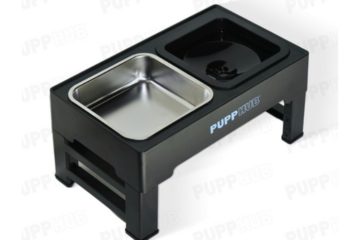Introduction
When it comes to walking your furry friend, using a harness can provide a safer and more comfortable experience for both you and your dog. However, getting your dog used to wearing a harness can be a bit of a challenge. In this comprehensive guide, we’ll explore various harness training tips to help you get your dog comfortable with a harness, focusing on dog harness with handle.
Why Use a Dog Harness?
Benefits of Using a Harness
- Reduces pressure on the neck and throat
- Provides better control during walks
- Helps prevent escape attempts
- Distributes weight evenly across the chest and shoulders
Advantages of a Dog Harness with Handle
- Offers additional control and support
- Assists in lifting and guiding your dog when needed
- Provides a secure grip in emergency situations
Choosing the Right Harness
Types of Dog Harnesses
- Step-in harnesses
- Over-the-head harnesses
- Vest harnesses
- No-pull harnesses
Factors to Consider When Selecting a Harness
- Size and fit
- Material and durability
- Comfort and padding
- Ease of use and adjustability
Introducing the Harness to Your Dog
Creating a Positive Association
- Use treats and praise to make the harness a positive experience
- Allow your dog to sniff and investigate the harness
- Encourage your dog to put their head through the harness opening
Gradual Desensitisation
- Start by holding the harness near your dog without putting it on
- Gradually move the harness closer to your dog’s body
- Reward your dog for remaining calm and relaxed
Putting the Harness on Your Dog
Step-by-Step Guide
- Ensure the harness is properly adjusted to fit your dog
- Gently guide your dog’s head and front legs through the appropriate openings
- Secure the harness around your dog’s chest and back
- Check for proper fit and make any necessary adjustments
Troubleshooting Common Issues
- Resistance to putting the harness on
- Squirming or trying to escape
- Chewing or biting the harness
Building Comfort and Confidence
Short Wear Sessions
- Start with brief periods of wearing the harness indoors
- Gradually increase the duration of wear time
- Provide plenty of treats and praise during these sessions
Incorporating Play and Positive Reinforcement
- Engage in play sessions while your dog is wearing the harness
- Use your dog’s favourite toys and games to create a positive association
- Reward your dog for calm and relaxed behaviour while wearing the harness
Walking with the Harness
Attaching the Leash to the Harness
- Locate the designated leash attachment point on the harness
- Securely clip the leash to the attachment point
- Ensure the leash is not twisted or tangled
Proper Walking Techniques
- Keep the leash loose and avoid pulling or jerking
- Use positive reinforcement to encourage good walking behaviour
- Practise regular stops and starts to maintain control
Using the Handle on the Harness
Situations Where the Handle is Beneficial
- Navigating crowded or high-traffic areas
- Assisting your dog in climbing stairs or entering vehicles
- Providing extra support for senior or disabled dogs
Proper Use of the Handle
- Grasp the handle firmly, but avoid putting excessive pressure on your dog’s back
- Use the handle to guide and support your dog, not to lift them off the ground
- Release the handle when not needed to allow your dog to move freely
Addressing Harness-Related Behavior Issues
Chewing or Biting the Harness
- Redirect your dog’s attention with toys or chews
- Use bitter spray or deterrents on the harness to discourage chewing
- Provide plenty of mental stimulation and exercise to prevent boredom
Pulling or Lunging on the Harness
- Implement loose leash walking techniques
- Use positive reinforcement to reward good walking behaviour
- Consider using a no-pull harness or seeking professional training assistance
Maintenance and Care
Cleaning and Washing the Harness
- Follow the manufacturer’s instructions for cleaning
- Use mild detergent and avoid harsh chemicals
- Allow the harness to air dry completely before use
Inspecting for Wear and Tear
- Regularly check the harness for signs of damage or fraying
- Replace the harness if any parts become worn or broken
- Ensure all buckles and attachments are secure and functioning properly
Conclusion
Recap of Key Points
- Using a dog harness, especially one with a handle, can provide a safer and more comfortable walking experience
- Gradual introduction and positive reinforcement are essential for getting your dog comfortable with a harness
- Proper fit, use, and maintenance are crucial for the effectiveness and longevity of the harness
Final Thoughts and Encouragement
With patience, consistency, and positive training techniques, you can successfully get your dog comfortable with wearing a harness. Remember to prioritise your dog’s comfort and safety, and enjoy the many benefits that a well-fitted harness with a handle can provide during your walks and adventures together.



